Patterns on glass with toothpaste. Ice patterns on glass - the most unusual natural phenomena
New Year's holidays are associated with numerous and rather stable associations, which include the aromas of pine needles and tangerines, sweets and gifts, a decorated Christmas tree and the indispensable Santa Claus with the Snow Maiden. Since childhood, we have been accustomed to consider winter as a cold, but rather cheerful time of the year, when you can build a snowman, go skiing and sledding and play snowballs. After all these fun, it's so nice to return home, to the warmth, when a blizzard is spinning outside the window, and the frost draws festive patterns on the glass. Nowadays, in most city apartments, windows are glazed with double-glazed windows, which perfectly store heat, but are completely immune to the efforts of Santa Claus. A beautiful hand-made frost pattern on glass will help to fill this shortcoming on the eve of the winter holidays.
How to make patterns on glass: toothpaste
Instead of paint, use ordinary white toothpaste, without additives. After diluting it with water, the mixture is sprayed onto the window with a spray gun, achieving a beautiful matte effect. When the base dries, the toothpaste diluted with water is applied to the glass with a dry hard brush, with thin strokes, trying to depict real frosty patterns. The main advantage of this method is that unsuccessful art is easily washed off, and the experiment can be repeated using a stencil.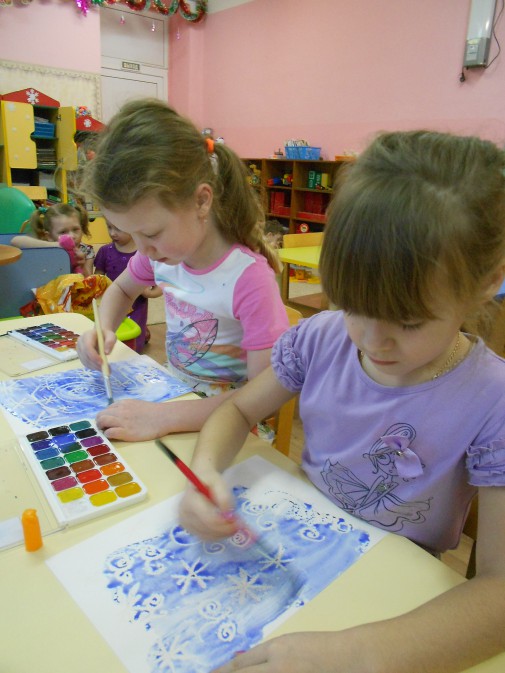
Patterns on glass: glue and powdered sugar
How to make frost on glass using improvised means? It’s elementary, but to start the creative process, it’s enough to stock up on stationery glue and powdered sugar. It is more convenient to apply glue with a stencil, and powder with a cosmetic brush or powder puff. Replacing the powder with sparkles, vanilla or small confetti, you will get an original pattern, bright and joyful in the New Year's way. The disadvantages of this method include the possibility of the appearance of ugly smudges as a result of the accumulation of condensate on the inner surface of the window, so it is better to apply frosty patterns on the “adhesive” method. interior doors or other glass surfaces that are in the room. For example, with powdered sugar, glue and glitter, you can decorate:- champagne glasses;
- glass vase with New Year's composition;
- mirror surface of the wardrobe.
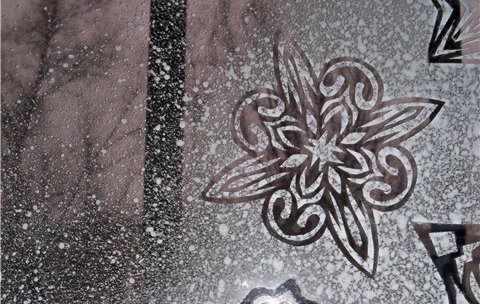
Beer and magnesia patterns
A solution obtained by mixing 50 g of magnesia and 125 ml of light beer is applied to the previously cleaned and dried glass with a cotton swab or brush. The pattern made with such a solution is as close as possible to natural frosty patterns, since crystals form on the glass during the drying of the mixture. You can speed up drying with an ordinary hair dryer, and “beer” pictures are washed off as simply as those made with toothpaste. In specialized stores and departments, you can find spray paints with which you can cover any surface with frosty patterns and artificial snow, but you will have to clean these arts either with solvents or with a razor.
Drawing lessons on the topic Winter in kindergarten
Master class on drawing using threads and monotype.
The master class is designed for middle and older children preschool age, teachers, parents.
The master class is intended for children of middle and senior preschool age, teachers, parents, students.
Purpose: use as a holiday card, as a picture for interior decoration, gift.
Target: Development of children's creative abilities through non-traditional drawing techniques.
Tasks:
1. Introduce children to image methods such as monotype (print), drawing with strings. Show expressive possibilities, features of drawing in these ways.
2. Develop imagination, imaginative thinking, color perception, Creative skills children. Arouse interest, responsiveness, emotional response to creative activity.
3. To educate children in goodwill, mutual assistance; diligence and diligence in the performance of work.
Materials: sheets of paper in the shape of windows, a grocery bag (one-time), gouache paints in white, blue, purple, turquoise colors, brush No. 5, a container of water, threads 25-30 cm, d -2mm (d - can be chosen and designed by the teacher ), palette, passport, blue and silver braid 5mm wide, glitter gel paints, scissors, straw; recording of P.I. Tchaikovsky "The Seasons".
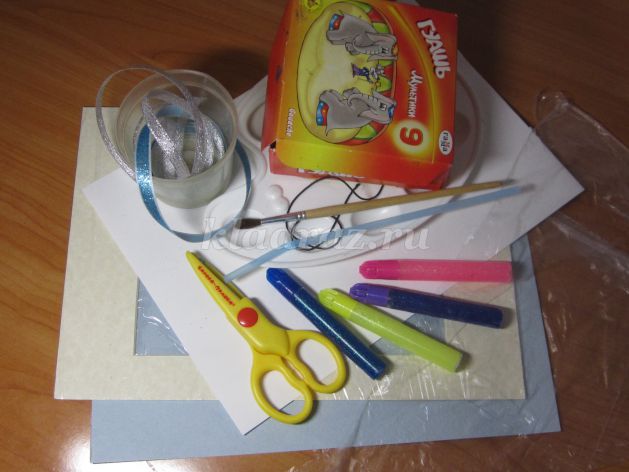
Preliminary work: examining patterns with children on illustrations of books, magazines, photographs, windows (not plastic), traces on ice after skating; conversation on the works of I. Surikov, A.S. Pushkin.
Lesson progress
(soft music playing)
- What is the master
put on glass
and leaves and herbs,
and bushes of roses?
(Freezing)
-In winter, you can see unusual, magical beauty on the windows, as if someone had painted the glass with patterns with paints and a brush. The mysterious artist of frosty patterns on the window is none other than frost.
-If you look at the pattern for a long time,
That will be a fabulous forest ...
Herbs, berries, leaves set
in the clearing of crystal wonders...
That pine branches sway
And the snow falls down
You will see, just look
for a frosty window surprise.
Now we will turn into wizards. We will paint each window with frosty patterns with the help of threads. But at the beginning of our work, we will create a winter background on sheets of paper, windows. This unusual method is called "monotype".
1. We apply multi-colored (blue, blue, purple, turquoise) spots on the bag randomly and quickly with a brush so that the paint does not dry out.
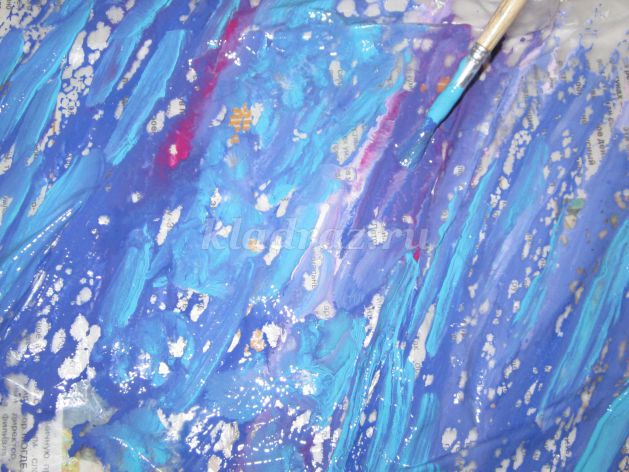
2. We put a sheet of paper on top of the colored bag, smooth it with our hand and print it.

3. Raise the sheet with the imprint, which then dries up.
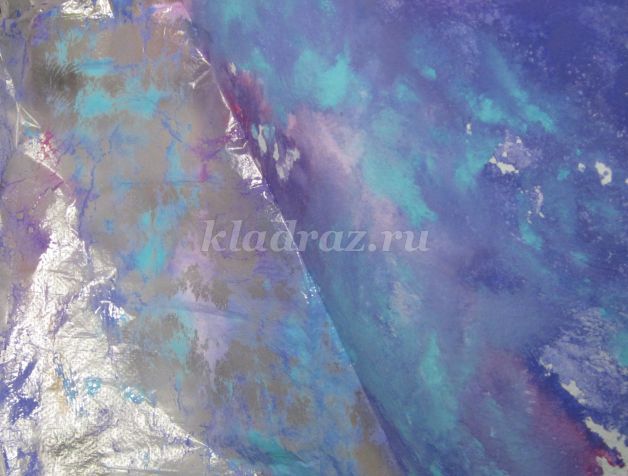
4. Put a thread on the palette with a “snake”, which we hold in our left hand. And in the right hand - a brush with which we paint the thread white. To prevent the thread from curling into a ball, you need to hold the tip of the thread with a brush.

5. We apply, lay out patterns with a thread (you can live a sheet of paper on top and lightly smooth it with your palm).
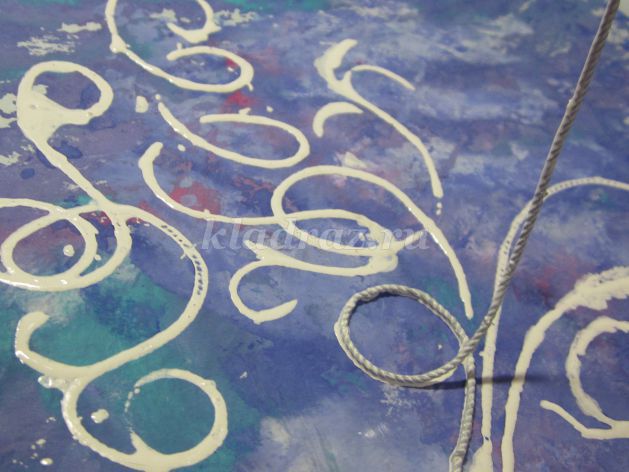
In this way, we repeatedly color the thread and apply patterns according to the plan on a sheet of paper.

6. Using the tip of the tube, which was dipped in paint, we decorate the drawing.
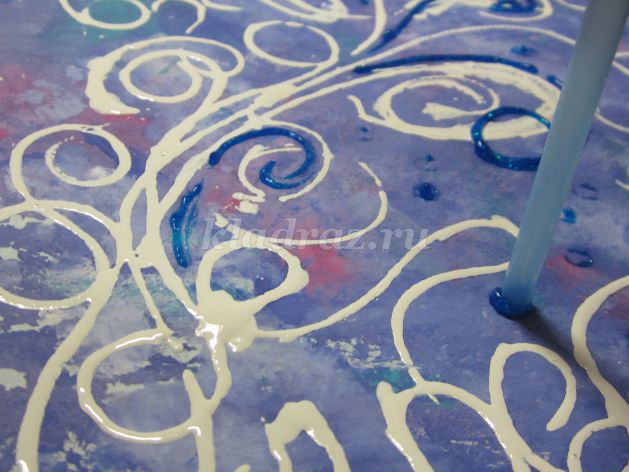
7. We insert the work into the passport, decorate as desired with shiny gel paints, a bow formed with a ribbon.
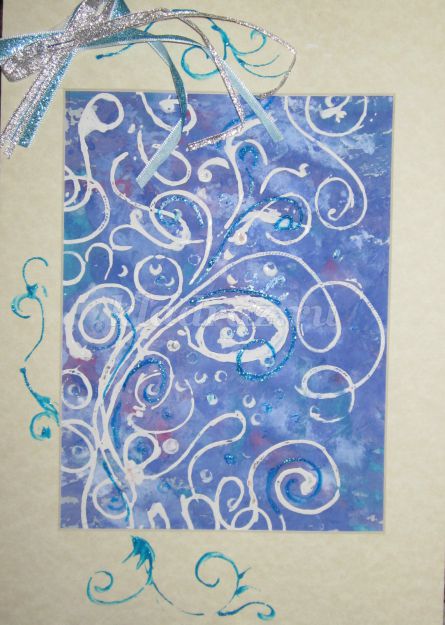
8. Exhibition of works. The teacher, when examining the work, draws the attention of children to the expressive originality of drawing with threads, interesting creation imprint.

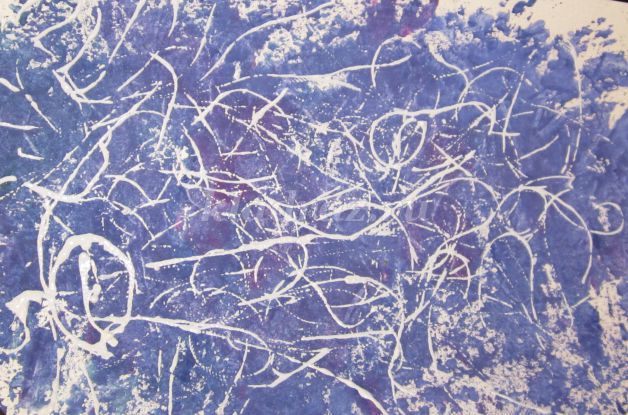
Thank you for attention!
There are several technologies for creating frost patterns on glass with your own hands. We will tell you about them.
Patterned frosts with their own hands. Option 1
This option is the easiest. To create frost patterns on glass with your own hands using this technology, you will need white toothpaste and brushes, preferably hard ones. Our parents drew such patterns with tooth powder.
First, dissolve the toothpaste in water and spray the glass with a spray bottle - this will create a haze. Then take toothpaste slightly diluted with water and start creating with light strokes. Apply strokes from the edge of the window glass to the center, creating shapes, imitating frost patterns. For example, you can keep several photographs of real frosty patterns on hand and draw from them, or you can create a stylized Christmas tree, snowman or other figures with similar strokes.
If you don't know how to draw - feel free to use stencils!
The advantage of this method is its simplicity and economy, as well as the fact that after the New Year holidays you easy to remove toothpaste from glass by simply washing it with a sponge and warm water.
Patterned frosts with their own hands. Option 2
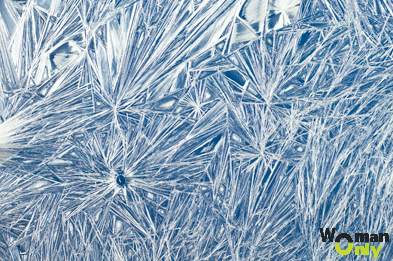
A more cunning and complex, but also more naturalistic method of creating frost patterns on glass with your own hands - method with beer and magnesia. Wash and dry the glass. Dissolve 50 g of magnesia or urea in half a glass of light beer and apply to the glass in any way: you can use a brush, a sponge or a cotton swab.
When applied, mimic frosty "feathers" and swirls. When the liquid begins to dry out, crystals will begin to appear on the glass, similar to real frost patterns. You can use a hair dryer to speed up the drying of the glass. This solution is also fairly easy to wash off window panes.
Patterned frosts with their own hands. Option 3
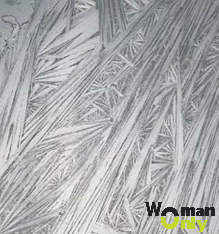
Another way to imitate frosty patterns on window glass is to dissolve 30–40 g of sodium hyposulfite in half a glass of water (this photographic fixer, it is also called sodium thiosulfate pentahydrate, you can try it in shops for professional photographers or in chemical reagent stores). Apply the mixture to the glass using the method described above and wait for it to dry. In this case, the crystals are denser, white, opaque.
Patterned frosts with their own hands. Option 4
In order to write congratulations or draw some drawings on glass, you can use ordinary glue and powdered sugar. To make the drawings smoother, you can make a stencil: using a sponge, apply glue to the glass using a stencil and then apply powdered sugar to the glass with a powder puff or a powder brush. Powdered sugar can be substituted chives, baking soda, vanillin. The only negative is that your drawing may “float” if condensation accumulates on the glass, and this will be very noticeable (unlike the previous methods).
Having decorated the glass with frosty stains, do not forget about the window sill. Put a white cloth or batting on it to imitate snowdrifts, sprinkle with sparkles, lay out cones, toys, fruits (tangerines - by all means!). Above the window, you can hang gold and silver stars cut out of shiny cardboard or glue them with small pieces of double-sided tape in upper corner glass.
If you don't really want to wash windows, decorate your house
Lyubov Fedotova
Looking at children's works by Elena Tynyanoy, Tatyana Goryacheva and other colleagues, I really liked the arched shape of the window. It was then that I decided that my guys should also draw windows of this shape. Lena has a drawing with paints, Tanya has a vytynanka (if I may say so) from ceiling tiles. And despite the fact that winter this year does not please us, not only patterns on the windows but also with snow, we decided to draw frosty patterns on the window. Therefore, I present to your attention Master Class"Frost patterns on the window"
For work need:
2 sheets of white paper
Candle, paints,
Scissors,
Glue stick.
1. First, draw with a candle yourself pattern on a white sheet and paint over.

2. While the drawing dries, cut out the arched window frame drawn in advance (I drew it myself, the children only cut it out).

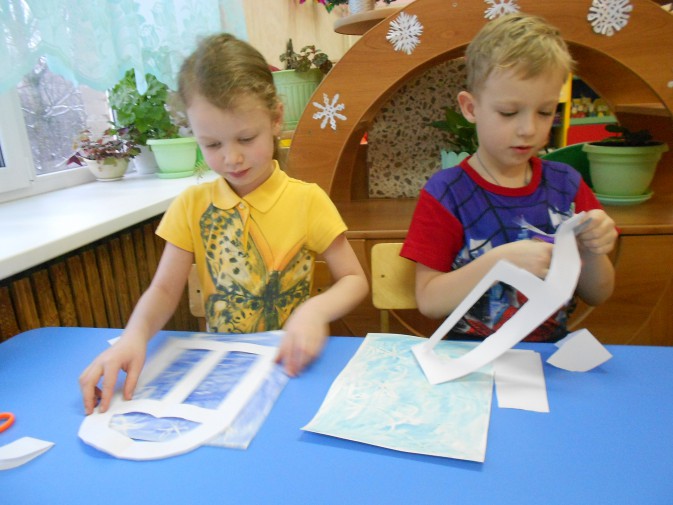
3. Glue the frame onto the drawing (it’s more convenient to glue the drawing itself with glue, so it’s more even for children)

4. Cut off the extra corners.
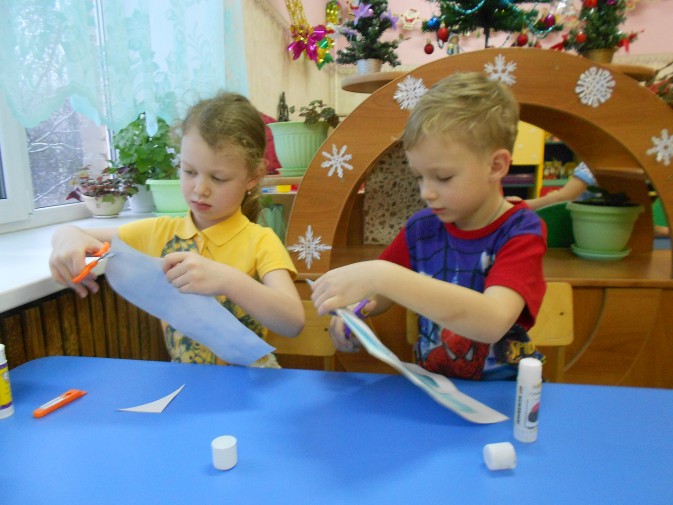
and window with frosty pattern ready!
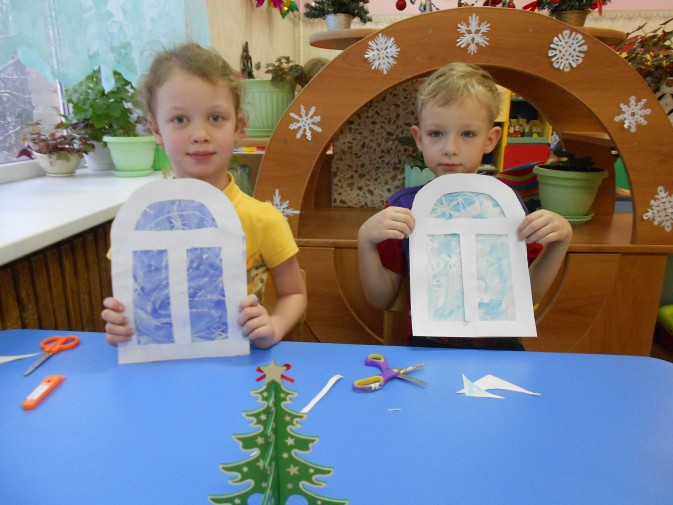
And that's what we got!
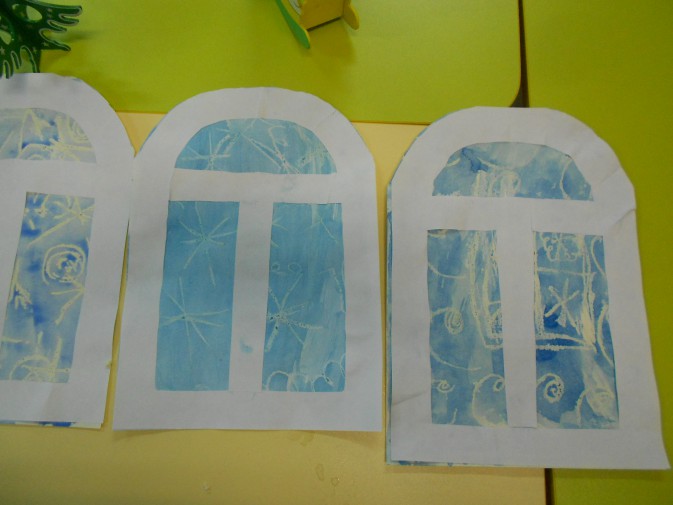
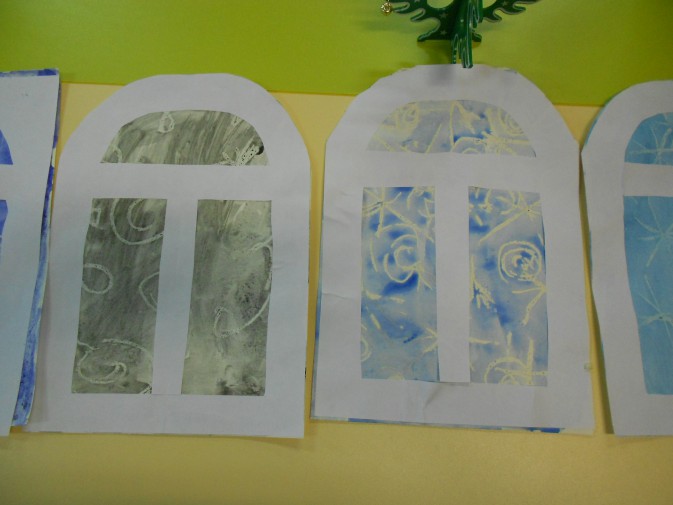
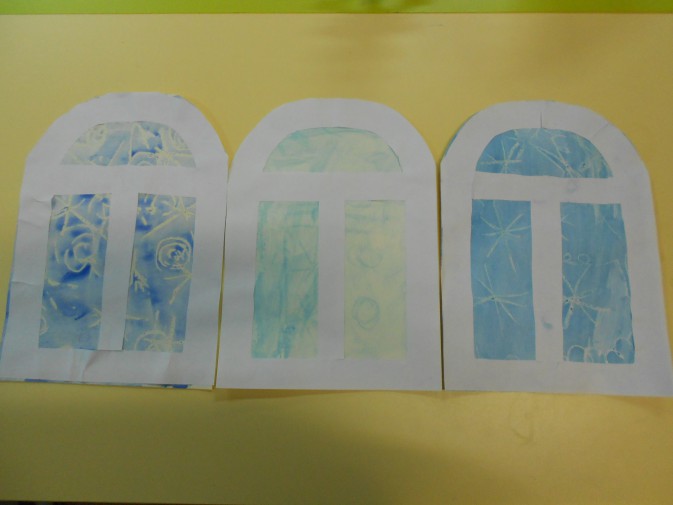
Thank you for your attention. I hope you enjoyed it.
Related publications:
In our kindergarten "Solnyshko" preparations for the New Year are in full swing, we decorate our kindergarten, groups, main entrance. Cut out.
GCD abstract for drawing "Frosty Patterns" Topic: "Frost patterns" Program content: to promote the formation of children's interest in winter natural phenomena; promote development.
Summary of GCD on visual activity using non-traditional materials in the senior group "Frost patterns" Program content: To cultivate love for the beauty of native nature, respect for each other and mutual assistance. Improve skills and abilities.
Fragment of GCD. The teacher gives the children a riddle. Invisible, carefully, he comes to me, And he draws like an artist, he designs patterns on the window.
Lesson on non-traditional drawing "Frost patterns" in the preparatory group Lesson on artistic and aesthetic development. Unconventional drawing. Theme "Frost patterns" using blot printing with threads.
Synopsis of an open integrated GCD on non-traditional drawing methods in the senior group "Frost Patterns" Abstract of an open integrated GCD on non-traditional drawing methods in senior group"Frost patterns". GBOU secondary school No. 1 named after I. M. Kuznetsov.

